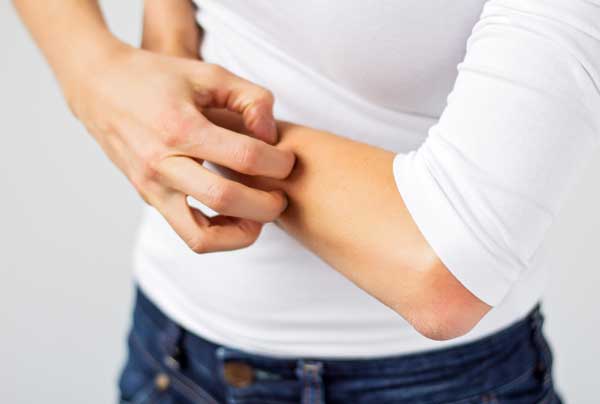Dr Maya Halabi-Tawil has acquired a solid experience in her 10 years practice in general dermatology in the most prestigious and specialized French Dermatology departments (Hôpital Saint-Louis, Hôpital Tenon, Hôpital Necker-Enfants Malades, Hôpital La Pitié-Salpétrière, Hôpital Lariboisière.)
General Dermatology
Psoriasis

Psoriasis is a chronic disease of the skin, roughly affecting 2–3% of the population. It usually manifests as red and scaly plaques on the skin, mostly on the knees, elbows, scalp and back. It can also affect the nails, the folds (inverse psoriasis), the palms and soles, and even the joints. It is an immune mediated disease, with both genetic (familial) and environmental (eg. infections) components. Importantly, in adults, psoriasis is often a marker of what we call the ‘’metabolic syndrome’’, with a number of patients having associated obesity, hypertension, atherogenic dyslipidemia , insulin resistance, diabetes and nonalcoholic fatty liver disease.
Psoriasis can have a significant negative impact on the quality of life of affected patients. Although psoriasis cannot be cured, there are a lot of therapies to help control it and get the patient in remission (free of symptoms).
Eczema
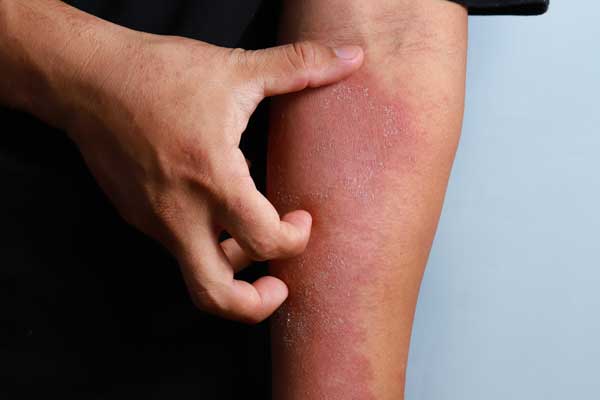
Eczema is a non-contagious itchy dry skin condition, affecting both children and adults. There are several types of eczema, atopic eczema being the most frequent one. Other types include contact eczema/contact dermatitis, where eczema is caused by a particular substance; dyshidrotic eczema, where tiny and extremely itchy blisters appear on the palms and soles; varicose eczema etc… Several treatment options are available and will be discussed depending on the severity of the disease.
Acne

Acne is one of the most common skin disorder –if not the most common-. It affects an estimated 85% of adolescents, and can sometimes affect adults, mainly women (adult-type acne). Acne can have many causes and precipitating factors, mainly hormonal changes, diet, cosmetics etc….
A global assessment of the patient will be done, and several options of treatment and eventually some lifestyle changes would be suggested.
Rosacea

Rosacea is a chronic affection of the skin and eyes, mostly affecting fair-skinned individuals in their third decade. It starts with sudden accesses of centro-facial redness called “flushes”, and when left untreated can evolve to visible dilated vessels, and outbreaks of pimples and pustules, affecting the midface (nose, cheeks, forehead and chin) not to be mistaken with acne.
Multiple modalities of treatment are available and would be discussed with the patient according to the severity of the disease.
Infectious skin diseases
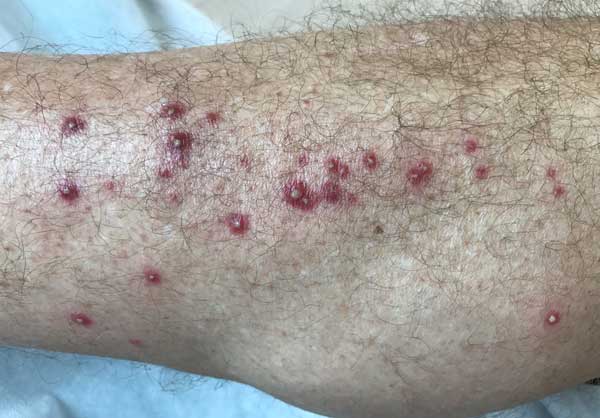
Infectious skin diseases of any origin will be assessed, from bacterial infections such as folliculitis, carbuncles, impetigo and erysipela, to fungal infections such as tinea versicolor, ringworm, tinea pedis…to viral infections such as herpes, pitiriasis rosea, herpes zoster/shingles, hand-foot-mouth disease…
Excessive sweating/ Hyperhidrosis
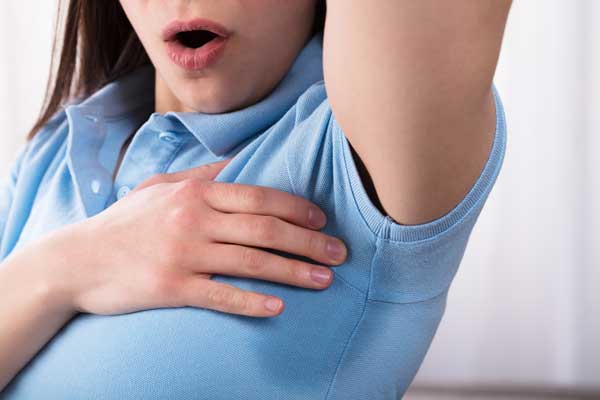
Hyperhidrosis is a very uncomfortable condition that affects more than 2% of us. It can be localized or generalized; can occur with no apparent cause, or be secondary to an underlying health problem (such as hyperthyroidism, diabetes and obesity, medications, menopause, even lymphomas…) In most cases however, it tends to be localized (armpits, or palms and soles) and usually starts at adolescence. Several treatment options exist, depending on the cause and extent of territories involved.
Suppurative hidradenitis
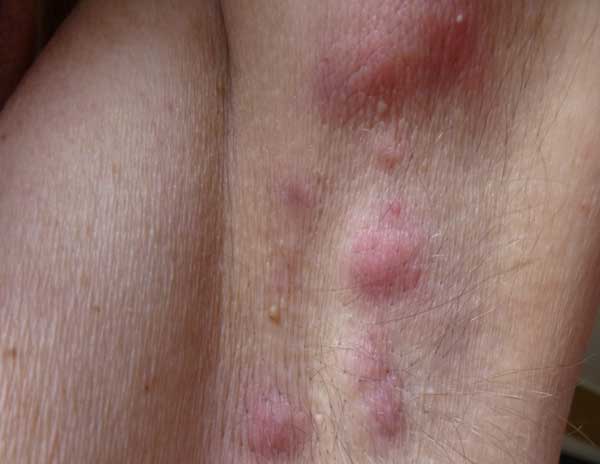
Suppurative hidradenitis also known as Verneuil’s disease: Hidradenitis suppurativa is a chronic condition in which an occlusion of the follicular portion of the hair follicule, known as the folliculopilosebaceous unit happens, causing inflamed nodules and abscesses to form in areas like the axilla, groin, perianal and perineal areas. Sometimes draining of pus and foul odor can occur, adding discomfort to pain. If left untreated it can lead to disfigurement with formation of bands of severe scar formation.
Different treatment options exist for this difficult to treat condition, and depend on the stage of the disease. Making some lifestyle changes are highly recommended and will be addressed during consultation.
Hair and nail diseases
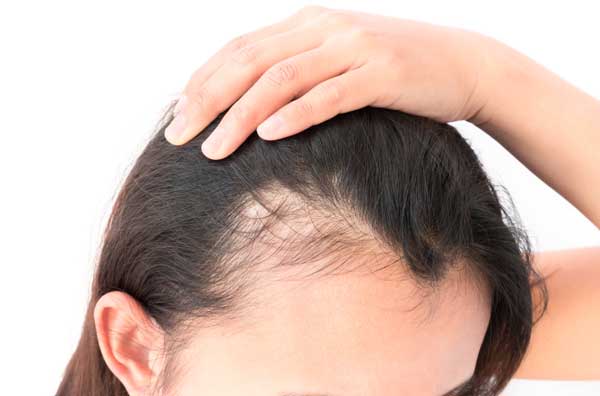
Hair loss is a frequent consultation motive and can be an extremely distressing condition, especially in females. It has multiple causes, ranging from seasonal hair fall to effluvium telogen (post delivery, surgery, chemotherapy…) to androgenetic alopecia, to vitamin and iron deficiency, to alopecia areata and tinea capitis (a fungus infection of the hair and scalp). Many dermatological diseases can also affect the scalp, such as psoriasis, eczema, seborrheic dermatitis, some of these skin diseases can even cause patches of baldness, eg. lupus erythematosus, lichen pilaris…
Nail affections of multiple causes can also be addressed, eg nail fungus, psoriasis of the nail , lichen planus of the nail …
Melasma
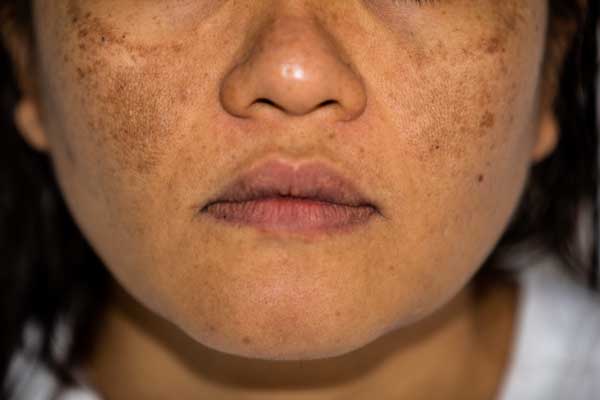
Brown spots/hyperpigmentation of the face is a very frequent complaint in Mediterranean and Middle eastern patients, mostly women. Triggers include hormones (pregnancy, contraceptive pills…), sun exposure, and preceding skin inflammation. Melasma is a difficult to treat condition, because it recurs very easily; proper explanations on how to avoid this condition would be given along with the most appropriate, or preferred treatment (depigmenting masks, topical lightening creams… always associated with special topical photoprotection/sunscreen +/ oral photoprotection.)
Skin allergies

Several conditions are commonly referred to -and sometimes wrongly – as skin allergy by patients. These comprise, for example, skin rashes secondary to oral medications or food; skin allergies to cosmetics or other substances that come in contact with skin/ the exact terminology being contact dermatitis. Hives/urticaria is also another skin condition often related to as skin allergy by patients, as well as atopic eczema/dermatitis.
A correct categorization of the “skin allergy” is the first step to proper treatment, which can range from eviction of the responsible medication to topical treatments (creams) to oral anti-allergic treatments known as anti-histamine medications.
Other

Auto-immune diseases are rarer conditions that can affect many internal organs as well as the skin. Scleroderma, Lupus erythematosus, dermatomyositis will be addressed in a multi-disciplinary fashion depending on the other organs involved, to give the most adapted medical care possible.
Genodermatosis: Genodermatosis are inherited disorders with anomalies of the skin, that frequently manifest in early infancy, or during childhood. A wide variety of skin conditions are grouped under this name. Neurofibromatosis, ichtyosis and xeroderma pigmentosum are some of the most frequent ones seen in adults. Some genodermatosis require close follow up (greater risk of skin cancer, association to internal malignancies etc…)




